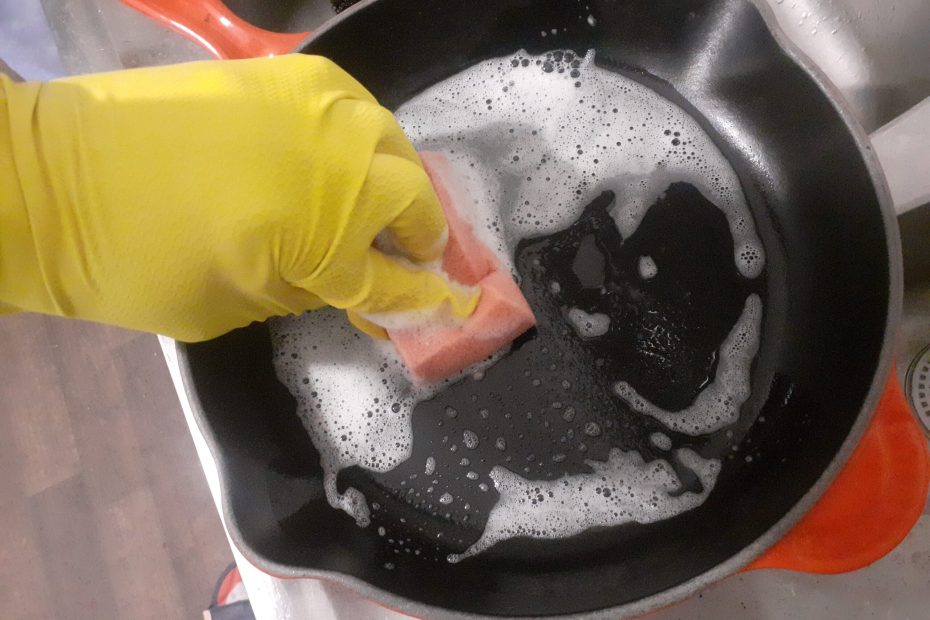As induction cooktops become increasingly popular due to their energy efficiency and cooking precision, the need to protect these investments is paramount. Understanding how to protect an induction cooktop from cast iron can save you from potential damage while maintaining a highly functional kitchen.

Understanding Induction Cooktops
Induction cooking uses magnetic fields to heat pans directly. This makes cooking faster and more efficient. However, it requires careful use of cookware to avoid damage. Let’s delve into some important ways to protect your induction cooktop from heavy cast iron cookware.
Why Cast Iron Poses a Risk
Cast iron is hefty and has a rough surface. When dragged across the glass surface of an induction cooktop, it can cause scratches or even cracks. Hence, learning about these risks is crucial for proper kitchen maintenance.

Use Protective Mats
One of the easiest ways to shield your induction cooktop is by using protective mats or pads designed specifically for induction cooking. These mats are heat resistant and can withstand the weight of cast iron without transmitting excessive pressure to the glass surface.
Material of Protective Mats
Opt for mats made from silicone or felt, as they provide a buffer between the heavy cast iron and the cookers surface.

Handle with Care
Always lift cast iron cookware rather than sliding it to avoid scratches. Its a simple practice but goes a long way in maintaining the integrity of your induction cooktop.
Proper Lifting Techniques
Use both hands for better control and ensure a gentle placement to avoid any accidental drops that could result in significant damage.

Keep Cooktop Clean
Keeping the surface of your induction cooktop free from debris can prevent scratches. Even tiny crumbs can cause abrasions when trapped between cast iron and the glass.
Cleaning Tips
1. Use a soft cloth or sponge with mild detergent.
2. Avoid abrasive materials.
3. Wipe spills immediately before they harden.
Regular Maintenance
Conduct regular checks for any residue build-up and clean it promptly. This helps in maintaining the aesthetic appeal and functional efficiency of your cooktop.
Use Cookware with Smooth Bottoms
Ensure that the cast iron cookware you use has a smooth and flat bottom surface. This minimizes the risk of scratches and enhances even heating during cooking.
Inspect Before Use
Before placing your cast iron on the cooktop, inspect its bottom for any rough edges or rust that could damage the glass surface.
Using Cooktop Protectors
Cooktop protectors are specifically designed for glass-topped stoves. These thin, heat-resistant pads are placed on top of the cooktop to provide an added layer of protection.
Invest in High-Quality Induction Cookware
Quality matters when it comes to selecting cookware for an induction cooktop. High-quality induction-compatible cast iron pans have smooth bases and are less likely to cause damage.
Recommended Brands
Brands like Le Creuset and Lodge offer induction-friendly pans that balance performance with safety.
Energy Efficiency with Proper Cookware
Using the right cookware not only protects your cooktop but also enhances energy efficiency, maximizing the benefits of your induction cooktop.
Compatible Cookware
Ensure that your cookware is marked as induction-compatible for optimal energy use. Most modern cast iron cookware meets this criterion.
Storage Solutions
Proper storage of cast iron cookware helps in preventing accidental damage. Place your pots and pans in a designated area to avoid sudden impacts on the induction cooktop.
Organized Kitchen
An organized kitchen minimizes clutter and reduces the risk of bumping heavy cookware into fragile surfaces.
Frequent Checks and Balances
Regularly check both your cooktop and cast iron cookware for signs of wear and tear. Early detection can prevent extensive damage and prolong the life of your appliances.
Educate Household Members
Make sure that everyone using the kitchen is aware of how to properly handle and care for induction cooktops and heavy cookware. Consistency in care practices ensures long-term protection.
Family Cooking Sessions
Engage family members in the cooking process and educate them about the importance of kitchen safety and appliance care.
Consider Professional Help
If unsure about maintenance or if your cooktop shows signs of damage, seek professional help. Expert maintenance can sometimes prevent more significant issues.
Contact Information
Keep the contact information of nearby appliance repair services handy for quick consultations.
Complementary Reading
Conclusion
Protecting your induction cooktop from cast iron is not as daunting as it seems. With a little care and the right practices, you can ensure that your kitchen remains both functional and visually appealing.
FAQs
Can I use a cast iron skillet on an induction cooktop?
Yes, you can, but make sure to use protective mats and handle the skillet carefully to avoid damaging your cooktop.
What type of cookware is best for induction cooktops?
Induction-compatible cookware with smooth, flat bottoms is best. Brands like Le Creuset and Lodge offer quality options.
How do I clean my induction cooktop?
Use a soft cloth or sponge with mild detergent and avoid abrasive cleaners. Wipe spills immediately to prevent them from hardening.
As an Amazon Associate, I earn from qualifying purchases.
By adopting these measures, you can enjoy the benefits of both modern and traditional cooking methods without compromising the longevity of your kitchen appliances. Happy cooking!

